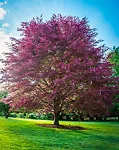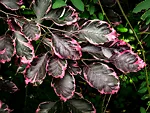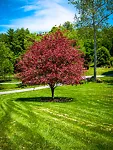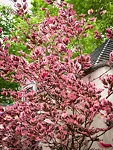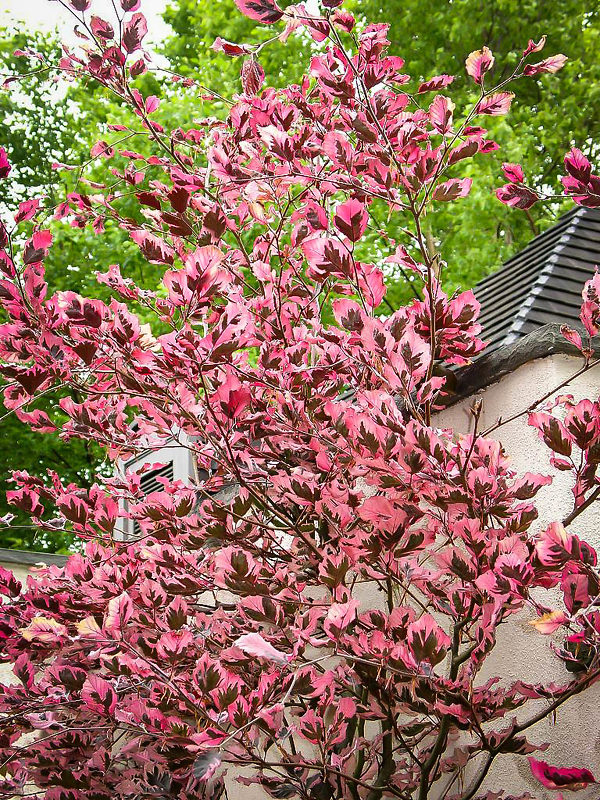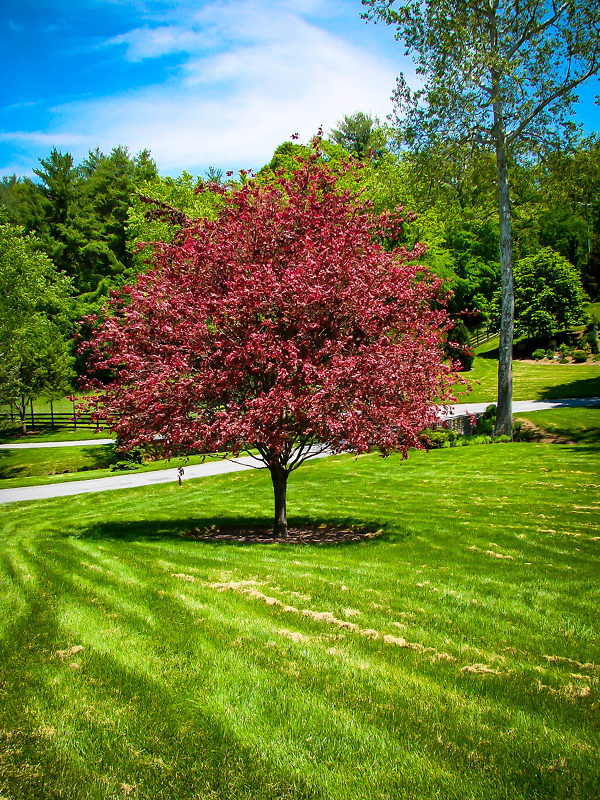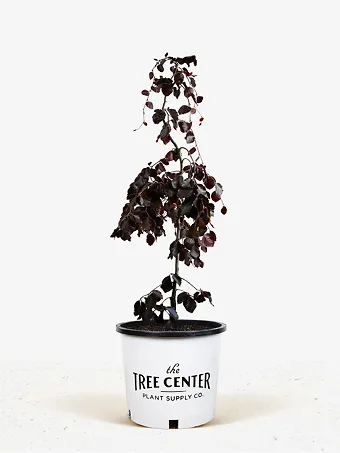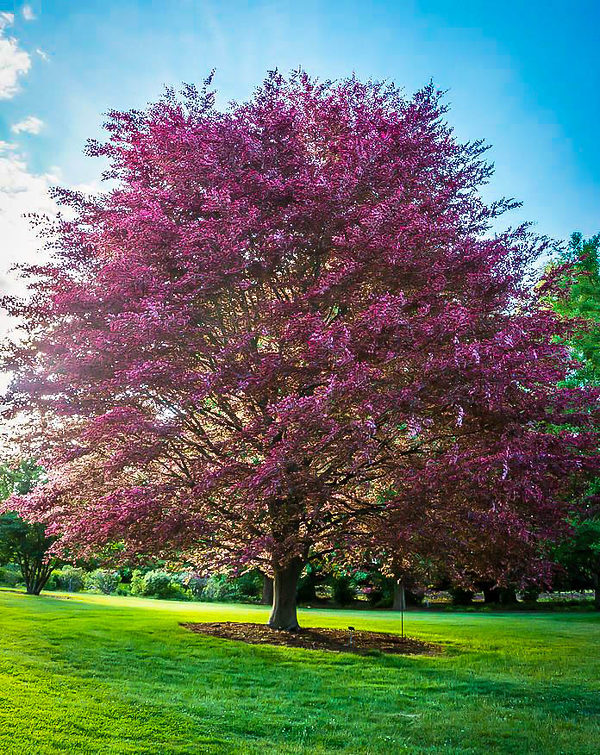
Tri-Color European Beech
Fagus sylvatica 'Purpurea Tricolor' (= 'Roseo-marginata')View more from Beech Trees
Tri-Color European Beech
Fagus sylvatica 'Purpurea Tricolor' (= 'Roseo-marginata')
30 day - ARRIVE AND THRIVE™ guaranteeLearn more


Special Features

Botanical Name
Fagus sylvatica 'Purpurea Tricolor' (= 'Roseo-marginata')
Outdoor Growing zone
4-7
Mature Height
20-30
Mature Width
10-20
Sun needs
Full Sun, Partial Sun
The Tri-Color Beech is without doubt one of the most spectacular and beautiful trees you will ever see, and for an eye-catching specimen, or an addition to your garden, this is the one. Perhaps you want to gift a tree to someone to mark a special occasion. Certainly, if you want a tree that is really, really, special, and incredibly beautiful for a large part of the year, then this is it. This rare tree is hardly ever available, and it offers a unique beauty not seen in any other tree. The stunning foliage is purple and pink, making a tree in spring look like it is flowering, not simply leafing out. The color turns more purple by mid-summer, and then golden bronze in fall. In winter the smooth, light-gray bark makes for continuing interest.
- Remarkable purple-pink foliage in spring and early summer
- Spectacular specimen tree with a unique presence
- Purple in summer and bronze in fall and early winter
- Moderate size for a specimen in a special location
- Easy to grow, with minimum care needed
The Tri-Color Beech grows in zones 4 to 7, and it thrives in areas with moderate temperatures all year round, and good rainfall. It will grow in any well-drained soil in most garden situations. It should be grown so that it has full sun in spring and afternoon shade in mid-summer. It needs no special pruning, and it can be grown with low branches, or a taller trunk. This easy-care tree has no significant pests or diseases, and it grows more and more beautiful every year that it occupies that special place in your garden.
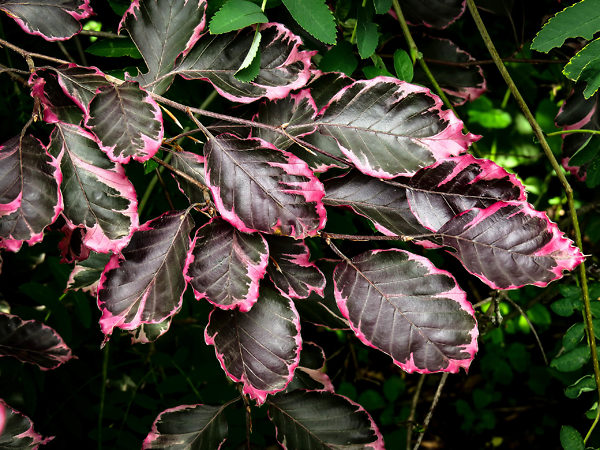
Every garden deserves at least one spectacular specimen tree, to be your personal signature on your garden, and make it distinctive from gardens around it. That specimen tree will be planted in a special place, perhaps in your lawn, or beside a patio, or perhaps in a spot where it is viewed from an important room or vantage point. Choosing the spot is one thing, and choosing the tree is another important pleasure, worthy of some consideration. The perfect specimen tree is distinctive, unique, and has features that make it stand out for a large part of the year. It should not be hard to grow, and also be an adaptable and reliable long-term addition to your garden. For such a tree, the Tri-Color Beech deserves special consideration, and this is definitely a ‘hot choice’ for that important spot in your garden.
Growing Tri-Color Beech Trees
The Tri-Color Beech grows into an upright, airy tree, eventually reaching 20 or 30 feet tall and 15 feet to 20 feet wide. It is not the shape, but the foliage, that makes it so very special. In spring the new leaves appear dressed in a dramatic shade of bright, rich pink-purple. If you look more closely you will see that each leaf is unique, with an irregular purple-pink zone, surrounded by a lighter pink zone. Some leaves will have a large purple area, others will be mostly pink. The effect is like a glowing pink sunset, radiating color across the garden, and holding your attention as no other tree will do. From a distance you might think this was a wonderful flowering tree, garlanded with bright flowers, but no, it is the remarkable leaves you are seeing.
The color continues all spring, and well into summer, until it fades gradually into a softer purple tone, fading just a little into the background of your garden. The arrival of cooler weather brings it back into prominence, as the leaves turn a gorgeous pale bronze. The leaves may stay on the tree well into winter, before falling, revealing smooth bark that is soft and gray, rather like the skin of an elephant. Then your tree will take a rest until it returns in spring dressed in sunset colors once again. Despite its remarkable and dramatic appearance, it is not difficult to grow, and it will develop into a superb, one-of-a-kind plant that is almost never seen in gardens, yet it is worthy of a place in every one.
Planting Location
Turning to practical matters, the Tri-Color Beech grows from zone 4 to 7, only failing in the hottest and coldest parts of the country. It will grow best in areas with moderate summer temperatures and regular rainfall. It should be grown in full sun to partial shade, and it does best with some afternoon sun in the summer months, or the leaves may burn a little – no harm done, but some loss of beauty will be the result. Grow it in moist, well-drained soil, enriched with organic material, and mulch the root zone with organic material in spring.
Care and Maintenance
Pruning is not needed, but you can train up a trunk if you wish, otherwise the branches will hold almost to the ground for a long time. You can keep the tree to a single trunk, or allow any multiple-trunks to develop, depending on your wishes. If you see any plain green or plain purple branches developing, remove them completely and quickly, so that they do not take over your tree. This is an easy tree to grow in suitable soil, climate and location, and it has no serious pests or diseases to be concerned about. It grows at a moderate rate of about 6 to 12 inches a year, and it may reach 30 feet in about that many years.
History and Origins of the Tri-Color Beech
The Tri-Color Beech is a special form of the European Beech, Fagus sylvatica. That tree grows across Europe and Britain, sometimes making whole forests, and sometimes mixed with other trees like oak. There are several forms with purple leaves, but the Tri-Color Beech is unique for its pink-purple leaves, such as we see in no other tree. It seems that this variation, which is basically a variegated leaf, but with a purple/pink, rather than the much more common green/white effect, has occurred several times. First in France and Holland in 1885, then again in 1888, and several times since then. North America is fortunate, because the American version, which may have originated before 1970 in Oregon, is very superior to European forms, and is the crème de la crème of an already beautiful and remarkable tree.
At the Tree Center we have been very fortunate to obtain some beautiful specimens of this unique tree, which must be grown by attaching stem pieces to roots of seedling beech trees. After carefully nurturing them for several years they are ready, and we know that this rare tree will rapidly sell, and soon be gone. We do not know when we may ever have another chance to offer them, so order now while our limited stock remains available.
